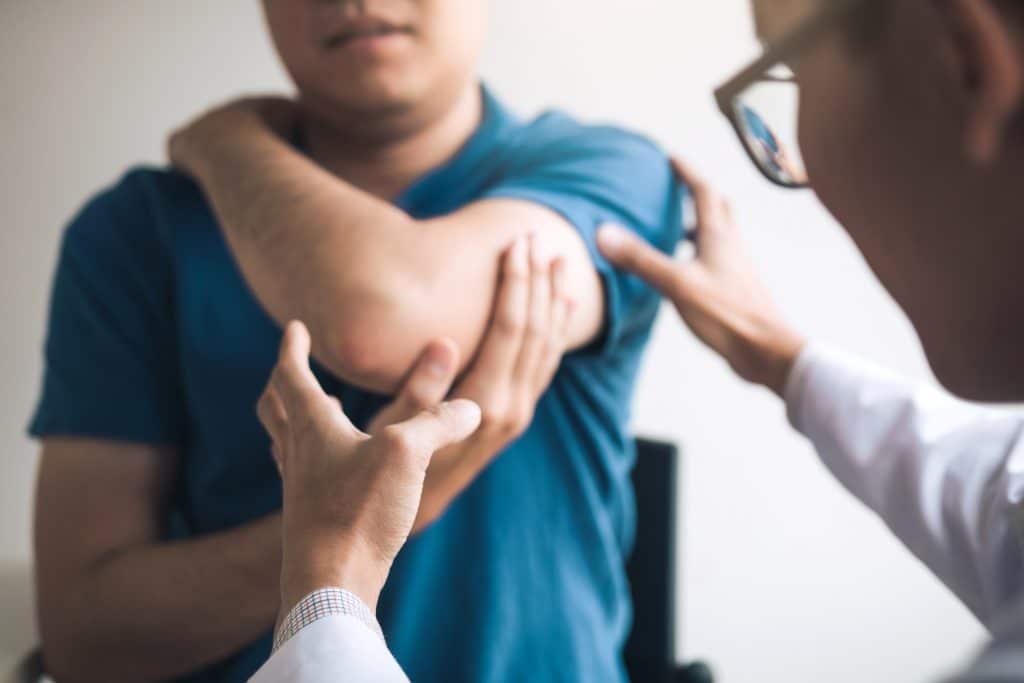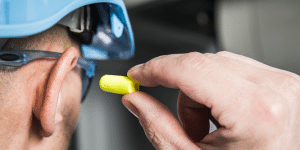TAKEAWAY: Employees in the transportation industry face many risks and hazards every day on the job — here’s what you need to know to help keep your workforce safe.
Table of contents
Fitness-to-Work Testing FAQs
SureHire’s Fitness-to-work (FTW) evaluations help employers understand an individual’s overall health status and provide recommendations for work accommodations and/or restrictions when necessary. Should an incident occur, employers can also use the information provided through our FTW when applying for cost relief through their province’s worker’s compensation board.
Check out this frequently asked questions video and contact us today to request a quote.
Musculoskeletal injuries come in several forms and affect tissues such as muscles, bones, and ligaments. There are many ways that musculoskeletal injuries can present. These could be anything from muscle strains and sprains to disorders such as carpal tunnel syndrome. Although there is a high incidence of musculoskeletal injuries in the transportation industry, there are steps that employers can take to mitigate this risk.
Work-related musculoskeletal disorders are one of the most frequently reported causes of lost work time. They affect both worker health and productivity. In turn, this has a negative effect at a company level. Employers must understand the most common musculoskeletal injuries in the transportation industry and the causes. With this knowledge in mind, they can more successfully adopt a proactive prevention approach.
Causes of musculoskeletal injuries in the transportation industry
The transportation industry includes workers in various sectors including trucking, building supplies, and warehousing. It encompasses job roles such as drivers, mechanics, machine operators, and equipment technicians. Across such a range of sectors and job roles, there are also many possible types and causes of musculoskeletal injuries.

For example, trucking is one sector within the larger transportation industry. It has a high prevalence of work-related injury rates and costs. Interestingly, most work-related injuries to truck drivers result from non-vehicle-related factors. Some of the most common causes of musculoskeletal injuries in long-haul truck drivers include falls and contact with equipment resulting in sprains or strains.
Within the trucking sector or any other area of the transportation industry, it is necessary to identify the factors that regularly cause musculoskeletal injuries. The movements and postures commonly adopted by workers usually relate to the nature of an injury. Generally, musculoskeletal injuries result from one of, or a combination of, the following common factors.
Awkward postures
Job tasks such as reaching and twisting for objects can put workers in awkward positions where they are more likely to get injured.
Prolonged static positions
Workers who spend long periods in a static position may be at an increased risk for injury. For example, long periods in a driver’s seat can increase the incidence of lower back pain.
Excessive force and overexertion
Excessive force and overexertion could be caused by workers lifting and carrying loads beyond their physical capabilities. Loading and unloading trucks, securing truckloads, and delivering goods are common job tasks in the transportation industry that might present this problem.
Repetitive movements
Repetitive movements occur with machinery operation and in any job role with excessive task frequency.
Slips, trips, and falls
Musculoskeletal injuries can occur when getting out of a large vehicle such as a truck. Uneven or slippery surfaces also pose an increased risk for slips, trips, and falls.
Musculoskeletal injury prevention tips for employers in the transportation industry
Prevent workplace-related musculoskeletal injuries through task adjustments. By changing how workers carry out tasks, employers can create and maintain a safe and healthy workplace. Employers in the transportation industry can use the following musculoskeletal intervention strategies to take preventative action for the health of their workforce.
Identify risk factors
Perform an analysis of each job task within your organization. Alongside each job task, identify the type and level of risk for musculoskeletal disorders. Additionally, highlight workplace hazards that may also pose an increased risk.
Adjust workplace policies and procedures
Based on the findings from your risk analysis, implement changes to workplace standards and procedures as required. Examples include:
- Implement job rotation to decrease the time employees spend doing the same tasks. Doing so reduces the likelihood of repetition that may spark a musculoskeletal injury such as a repetitive strain injury or a repetitive motion injury.
- Ensure adequate rest breaks and appropriate shift length as an approach to decreasing fatigue-related injuries. Doing so will also reduce the time spent in static positions.
- Establish clearly defined limits on load-carrying to minimize the risk of musculoskeletal injuries from excessive force and exertion.
Education and training for employees
Employers should undergo regular training and education initiatives with employees that aim to reduce the incidence of musculoskeletal disorders. Employers can provide education on the early warning signs of musculoskeletal injuries so that their workforce is able to recognize any potential issues before they turn into larger health problems.
It is also imperative to address preventative measures, how effective they can be, and how important they are. These measures include things like lifting techniques, stretching and strengthening exercises, education about the importance of taking regular breaks, and fatigue management. [Learn more about SureHire’s Fatigue Risk Management program here].
Carry out an ergonomic assessment and optimize ergonomics in the workplace
An ergonomic evaluation analyzes various aspects that may contribute to health problems. It includes not only physical factors but also psychological and organizational factors.
Ergonomic assessments identify ways to improve health and safety by changing the environment. The results can help form an action plan for improving workplace ergonomics. The ultimate goal is to help prevent future work-related musculoskeletal injuries and illnesses.
Examples of workplace ergonomic adaptations in the transportation industry can involve:
- Using specific tools and technology to reduce the strain of certain tasks. For example, transporting heavy items with machinery such as forklifts, and using trolleys and conveyors to transport goods from one place to another
- Adjusting the environment to fit the worker. For example, it should be easy to reach frequently used items without necessitating an awkward posture. Heavy items can be placed between knee and shoulder level so excessive bending and reaching isn’t required.
- Implementing ergonomic aids to reduce worker discomfort and fatigue. For example, drivers may benefit from ergonomic aids such as a headrest, adjustable cushioned seats, and an adjustable steering wheel.
Invest in fitness-to-work testing
Many job roles require the worker to carry out specific movements on a frequent basis. These could include bending, lifting, carrying, reaching, crouching, and spending long periods on their feet. Workers must meet the physical task requirements of their job role.
Fitness-to-work testing helps ensure that workers’ job tasks are appropriate. It is a method for evaluating a job candidate’s physical capabilities against their job requirements. Employers are guided on the adaptation of work tasks as required. They will also learn to provide accommodation for workers with physical limitations. Fitness-to-work testing is one proactive approach to reducing the prevalence of musculoskeletal injuries in the workplace.

Request a Quote for Fitness-to-Work Testing
SureHire’s Fitness-to-work evaluations help employers understand an individual’s overall health status and provide recommendations for work accommodations and/or restrictions when necessary. Should an incident occur, employers can also use the information provided through our Fitness-to-Work testing when applying for cost relief through their province’s worker’s compensation board.
Learn more and request a quote today!
You May Also Be Interested In…
- Do You Have Reasonable Suspicion?
 Employers cannot initiate reasonable suspicion testing without first going through the 5-step process. Reasonable suspicion training provides critical information about how to initiate reasonable suspicion testing, including the 5-step process and other tools that employers can use to help manage the misuse of alcohol and drugs in the workplace.
Employers cannot initiate reasonable suspicion testing without first going through the 5-step process. Reasonable suspicion training provides critical information about how to initiate reasonable suspicion testing, including the 5-step process and other tools that employers can use to help manage the misuse of alcohol and drugs in the workplace. - An Employer’s Guide: What You and Your Employees Need to Know About DOT Drug & Alcohol Testing
 When implementing or maintaining DOT Drug & Alcohol testing, there are key areas that employers should consider.
When implementing or maintaining DOT Drug & Alcohol testing, there are key areas that employers should consider. - SureHire Occupational Testing Acquires COHR Health: A Positive Step Towards Safe, Healthy, Productive Workforces and Communities
 We are thrilled to announce that today, May 6, 2024, SureHire Occupational Testing has officially acquired COHR Health, a well-known leader in occupational health services. Read on…
We are thrilled to announce that today, May 6, 2024, SureHire Occupational Testing has officially acquired COHR Health, a well-known leader in occupational health services. Read on… - Occupational Testing Use Case – Mining
 In this case study, we will explore how mining companies can use various types of occupational tests to reduce Total Recordable Incident Rates (TRIR) long term.
In this case study, we will explore how mining companies can use various types of occupational tests to reduce Total Recordable Incident Rates (TRIR) long term. - 9 Strategies to Keep Workers Cool on Drilling Sites During Hot Summer Months
 This article delves into strategies to keep workers cool and safe on drilling sites during the hot summer months.
This article delves into strategies to keep workers cool and safe on drilling sites during the hot summer months. - Hearing Conservation Basics: How to Manage Occupational Noise
 Learn how to proactively mitigate occupational noise risks and help prevent NIHL among workers.
Learn how to proactively mitigate occupational noise risks and help prevent NIHL among workers.

